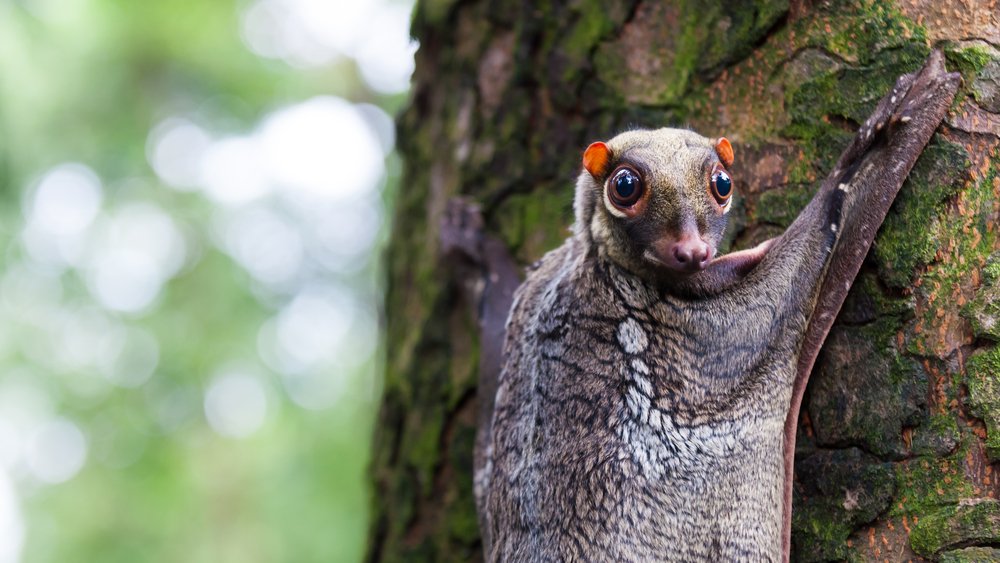Sunda Flying Lemur (Galeopterus variegatus)

Blurb from the Author: You know the saying “the eyes are the window to the soul”? Well, this saying couldn’t be more true for this little guy. He stares right into your soul haha! His eyes captivated me and I couldn’t ignore him and not write about him. Besides his eyes, his fur color really caught my eye and how it helped him to blend into the trees. He also doesn’t look like your typical lemur, more of a flying squirrel or sugar glider deal. It perplexed me so I had to find out more! Surprisingly, I found out there is not much known about these guys.
Lifespan: ~7.5 years old
Population Size: unknown (but decreasing 🙁 )
Geographical Location: They can be found in the tropical rainforests of Southeast Asia.
Diet: They are herbivores (more specifically folivores and frugivores). They eat things such as the soft plant parts (fruits, flowers, and buds) nectar, sap and young leaves.
Size: 2-5 lbs, 50-69 cm long (including tail), wingspan of ~70 cm
Conservation Status: least concern
Predators: There are no specified predators to this species, but humans are known to be their top predator (habitat loss).
Reproduction: Not much is known about their reproduction systems, but unlike many species, the sunda flying lemur mates throughout the year. They have a gestation period of about 60 days and produce 1-2 offspring. These offspring cling onto their mothers while she makes a makeshift pouch out of her skin flaps to hold them close to her.
Communication: They are solitary creatures and not much is known about their communication. There is speculation that they possibly communicate with “ultrasound” calls that are difficult to hear with the human ear.
- Fun Facts:
- They don’t fly they glide!
- They glide with the extra folds of skin between their limbs and tail
- It is not a lemur (the name is very misleading in many ways haha)
- They are nocturnal
- They are great climbers
- They are also referred to as colugos
- Their closest living relatives are primates and bats
- They sleep in holes in trees or suspended from branches
- They are helpless on the ground (this is why they are never found on the ground and remain in trees)

Websites Used for Research: http://animalia.bio/sunda-flying-lemur https://animaldiversity.org/accounts/Galeopterus_variegates/ https://news.mongabay.com/2018/05/first-record-of-ultrasound-communication-in-the-mysterious-sunda-colugo/
References: Beatson, K. 2011. “Galeopterus variegates” (On-line), Animal Diversity Web. Accessed April 07, 2020 at https://animaldiversity.org/accounts/Galeopterus_variegates/